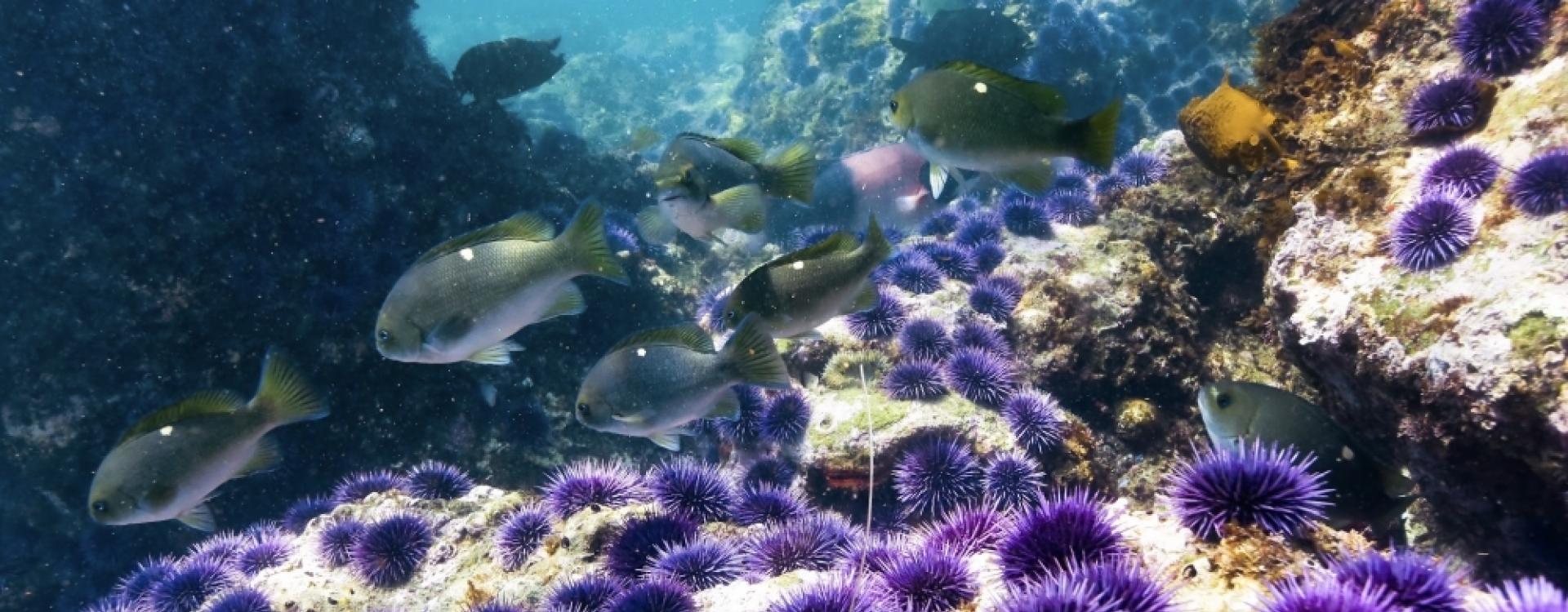
A school of opaleye swim past grazing purple urchins off Santa Cruz Island. Photo Credit: Jacey Van Wert
A fish’s appetite can vary enormously with the temperature.
To better understand how temperature affects our finned friends, researchers at UC Santa Barbara studied opaleye fish under a variety of temperatures and diets.
They found that both diet and temperature influenced fish physiology and metabolism, but the effects were specific to each trait. The results, published in the Journal of Experimental Biology.
Opaleye were an ideal model to study this interaction. The omnivorous fish are a common sight in kelp forests and reefs from Point Conception to southern Baja California. In 2006, UCSB researchers found that wild opaleye eat more algae in the warmer, southern part of their range than in the colder north. And other omnivorous fish show a similar trend.
“We hypothesized they were doing this because it benefitted them,” said lead author Emily Hardison, a doctoral student in the Department of Ecology, Evolution, and Marine Biology.
Understanding the nexus of diet and environmental conditions is crucial in the face of climate change. Global warming is not only raising water temperatures, it’s also changing the nutritional landscape. Climate change can alter food quality and quantity, explained Erika Eliason, an assistant professor of ecological and evolutionary physiology. So even for animals that don’t shift their diet in response to temperature, what’s available to them might change.
And temperature is just one condition in flux. Climate change is affecting acidity, salinity and even dissolved oxygen content in the ocean. How these interact with animals’ diets and physiology is still under study.
Krista Kraskura and Jacey Van Wert (both in the Eliason lab) also contributed to this study, as did former UC Davis student Tina Nguyen, who spent eight weeks in the lab as part of the UC LEADS program. The work was funded by Eliason’s Hellman Faculty Fellowship.